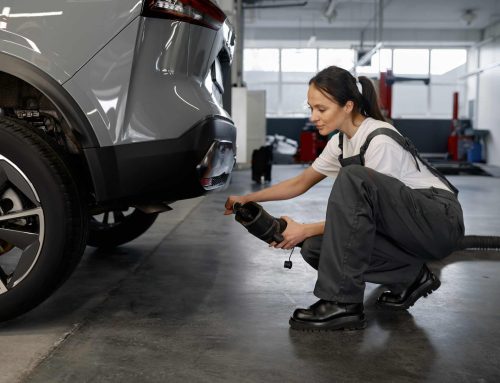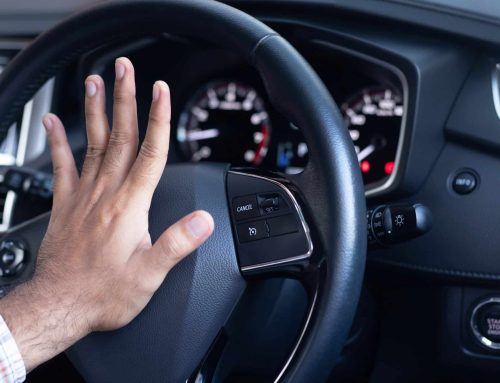When the Road Gets Rough: Car Survival Skills
Driving is an essential part of daily life, and we all hope for a smooth journey when we hit the road. But sometimes, the road can throw unexpected challenges our way, from a flat tire on a lonely highway to a dead battery in a parking lot.
Here, we cover a few essential skills that will keep you better prepared for the unpredictable moments that can happen while driving, ensuring you’re ready to handle any situation.
How to Change a Tire
A flat tire is one of the most common car issues, and knowing how to change it can save you a lot of trouble, especially when you’re far from help or in a hurry. Here’s how to do it:
Find a safe location and prepare
When you realize you have a flat tire, immediately find a safe, level place away from traffic where you can pull over. Turn on your hazard lights, apply the parking brake, and gather your tools: the spare tire, a jack, and a lug wrench. Review your vehicle owner’s manual to ensure you understand where to place the jack and any specific instructions related to your car’s tire-changing process.
Loosen the lug nuts and lift the car
Use the lug wrench to loosen the lug nuts on the flat tire. This can require quite a bit of force, so it’s best to keep the car on the ground to prevent the wheel from spinning. Then, carefully position the jack in the location stated in your owner’s manual (usually under the car’s frame near the flat tire). Slowly lift the vehicle until the tire is far enough off the ground to fit the fully inflated tire.
Replace the tire
Once the car is lifted, finish removing the lug nuts and take off the flat tire. Mount the spare tire onto the wheel studs, then hand-tighten the lug nuts. Lower the car using the jack until the spare tire is firmly on the ground, then fully tighten the lug nuts in a star pattern to ensure even pressure.
Final check
After the new tire is secure, double-check that all the lug nuts are tight. If you have a tire pressure gauge, use it to ensure the spare is properly inflated. Finally, store the flat tire and tools back in your trunk, and you’re ready to hit the road.
How to Jump-Start a Car
A dead battery can leave you stranded, but jump starting your car is a simple process if you know what to do.
Position the vehicles correctly
Park the vehicle with the working battery close enough to your car for the cables to reach, ensuring the two cars aren’t touching. Both cars should be turned off. Open the hoods and locate the batteries.
Connect the jumper cables
Attach one end of the red (positive) cable to the dead battery’s positive terminal, then connect the other end to the positive terminal of the working battery. Attach the black (negative) cable to the working battery’s negative terminal. To ground the circuit, connect the remaining black cable to an unpainted metal surface on the car with the dead battery, such as an unpainted bolt or bracket.
Start the working car’s engine
Start the car with the working battery and let it run idle for a few minutes. This will allow the dead battery to charge enough to start your vehicle.
Start your car and disconnect the cables
Try starting your car. If it starts, keep it running for a while to ensure the battery charges. Carefully remove the jumper cables in the reverse order of how you connected them. Drive your car for at least 15 minutes to allow the alternator to recharge the battery fully.
Essential Emergency Items
Preparation is key to staying safe during unexpected situations. Here are some potentially life-saving items to keep in your trunk.
- Spare tire, jack, and lug wrench: Your basic tools for changing a flat tire.
- Jumper cables: A must-have for jump starting a dead battery.
- Flashlight with extra batteries: Essential for nighttime repairs.
- Basic tool kit: Includes screwdrivers, pliers, and an adjustable wrench for minor repairs.
- Duct tape: A quick fix for various issues, from securing a loose part to patching a leaky hose.
- Blanket: Useful in cold weather if you need to wait for extra assistance.
- Non-perishable food: Essential sustenance during long waits.
- First aid kit: For treating minor injuries on the go.
- Printed atlas or map: A backup navigation option in case technology fails.
- Emergency reflective triangles or flares: To alert other drivers if your car is stopped on the side of the road.
Stay Prepared, Stay Safe
While you can’t prevent every potential car problem or emergency, safe driving practices can significantly reduce your risk and help you handle unexpected situations on the road. Register for a driver’s education or defensive driving course and equip yourself with essential driving knowledge.








